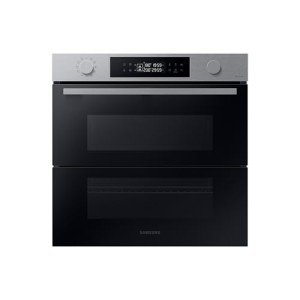The Rise of Built-In Ovens: A Seamless Approach to Modern Cooking
In modern kitchens, where style looks mix seamlessly with performance, one device stands apart as a true game changer: the built-in oven. As house owners and chefs alike continue to seek ingenious solutions that boost their cooking experience, built-in ovens have ended up being significantly popular. This post checks out the advantages, considerations, and patterns surrounding built-in ovens, highlighting why they are an important function in modern-day cooking spaces.
What is a Built-In Oven?
A built-in oven is a kitchen appliance developed to be integrated into the cabinetry of a cooking area instead of standing alone. Unlike conventional freestanding ovens, which can be moved and placed anywhere, built-in ovens can be found in numerous designs and sizes to fit particularly within designated spaces. Readily available in single or double configurations, these ovens offer a streamlined appearance that matches modern kitchen area designs.
Advantages of Built-In Ovens
1. Space-Saving Design
Among the most appealing benefits of built-in ovens is their space-saving style. By integrating the oven into kitchen cabinetry, you can release up valuable counter and floor area. This is particularly advantageous in smaller sized cooking areas, where making the most of space is necessary. Built-in ovens can be set up at eye level, making them more available and reducing the need to bend down.
2. Visual Appeal
Built-in ovens contribute to a smooth and cohesive kitchen design. Offered in different surfaces-- such as stainless-steel, black, white, and custom-made cabinetry-- they can blend seamlessly into the general design. This visual appeal enhances the kitchen area's visual harmony and elevates the area, producing a contemporary and sophisticated atmosphere.
3. integrated oven hob & extractor packages built-in ovens come geared up with innovative cooking innovations, such as convection cooking, steam ovens, and wise functions. These enhancements enable flexible cooking alternatives, making it easier to attain professional-level outcomes in your home. Smart built-in ovens can even link to Wi-Fi, making it possible for users to control the oven from another location, receive alerts, and gain access to a range of cooking programs and recipes.
4. Enhanced Ventilation

Since built-in ovens can be integrated with kitchen area hoods and ventilation systems, they can assist maintain much better air quality and minimize cooking smells. This is specifically considerable for those who like to prepare with aromatic spices and components, as an efficient ventilation system can keep the cooking area comfortable and inviting.
5. Personalization Options
Built-in ovens offer a wide variety of modification options to suit individual cooking styles and requirements. From professional-grade home appliances with several cooking modes to compact designs for smaller sized cooking areas, property owners can pick the oven that fits their specific requirements. Lots of makers likewise use adjustable front panels, allowing you to match the oven's look to your kitchen cabinetry for a really combined look.
Factors to consider When Choosing a Built-In Oven
While built-in ovens have lots of benefits, there are essential factors to consider to bear in mind before buying:
1. Rate
Built-in ovens normally feature a higher cost than their freestanding equivalents due to their design and setup requirements. It's essential to factor in both the cost of the oven and any extra expenses related to cabinets adjustments or installation.
2. Setup Requirements
Installing a built-in oven often requires professional support, specifically if you need to modify existing cabinetry. Make sure that you consider any costs related to installation, consisting of labor and possible cabinets modifications.
3. Size and Dimensions
Before acquiring a built-in oven, measure the designated area precisely to guarantee an appropriate fit. Built-in ovens been available in numerous sizes and setups, so selecting one that aligns with your requirements and kitchen design is vital.
4. Lifestyle and Usage
Consider your cooking routines and requires when picking a built-in oven. If you regularly host large events, a double oven might be more beneficial. On the other hand, if you have a compact kitchen area, a single-wall oven might be adequate.
Patterns in Built-In Ovens
The kitchen home appliance market is continuously progressing, and built-in ovens are not exempt from emerging trends. Some present trends consist of:
Smart Technology Integration: With the rise of smart home technology, built-in ovens now typically feature connectivity alternatives. This enables users to keep an eye on cooking development and adjust settings by means of mobile apps.
Energy Efficiency: As sustainability ends up being a concern, lots of manufacturers are investing in energy-efficient built-in ovens that minimize energy intake while keeping performance.
Multi-functional Designs: Built-in ovens now offer functions such as air frying, sluggish cooking, and steaming, offering flexibility that satisfies a large range of cooking approaches.
Conclusion
Built-in ovens unquestionably represent an ideal mix of style, function, and convenience in today's cooking areas. As more homeowners choose for this modern-day service, the focus moves to developing a cooking space that is as aesthetically pleasing as it is useful. Whether you are constructing a brand-new home or remodeling your kitchen, thinking about a built-in oven might elevate your culinary experience and transform your kitchen into an elegant and functional haven. With a range of alternatives available and continuous developments in technology, built-in ovens remain a standout option for both beginner cooks and culinary enthusiasts alike.
